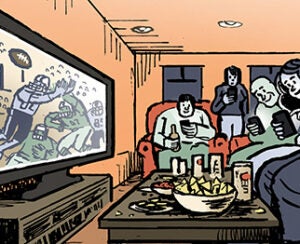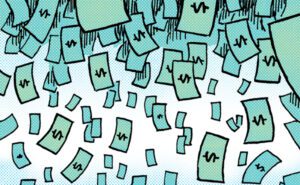 “The Sell Sider” is a column written by the sell side of the digital media community.
“The Sell Sider” is a column written by the sell side of the digital media community.
Today’s column is written by Peter Spande, chief revenue officer at Business Insider.
Back in September, ahead of the banner ad’s 20th birthday, Mediasmith’s Marcus Pratt opined on its uncertain future and proclaimed that it has long passed its peak. And then last month, Farhad Manjoo added his voice to the chorus with a discussion of the banner ad’s decline in The New York Times.
I found myself in the position of apologist for banner advertising in conversations online and off. While many people I respect disagree with me, I believe banners aren’t dying. I think we are just now beginning to figure out how powerful web advertising can be for marketers and, on occasion, for the people who see them.
The banner isn’t dead, but it does need to grow up. Fortunately, that’s exactly what is happening.
Lots Of Warts
Sure, the banner ad has its faults and some dynamics working against it. To name a few:
People don’t like advertising: I know that is somewhat sacrilegious in an advertising trade publication, but it is true. We almost always prefer an ad-free environment. That is the case for websites just as for TV. When given the choice, nearly everyone will choose the ad-free version of a product. Publishers, advertisers and their agencies must recognize this and find the best way forward.
There are plenty of bad banner campaigns: We can’t blame the banner format for bad creative. I don’t blame Louis C.K. for all the horrible ads I see when viewing his brilliant FX show. I also don’t blame the frame for a piece of art that I find especially awful, either.
Many ignore user experience to maximize revenue or efficiency: Publishers possess a wide array of options to generate revenue from their web properties. Since many tools can detract from the user experience, publishers must carefully weigh short-term revenue gains with long-term product reputation. If adding another ad unit to the page helps solve an inventory or ad yield issue, that’s what some publishers will do. If a site can double its cost per mille by allowing autoplay with sound, that’s the road others will choose.
These decisions can create user experiences that are cluttered and difficult to navigate but this isn’t solely a publisher’s issue. Advertisers often reward those extreme sites by prioritizing efficiency and impact over user experience and exclusivity. The focus on ad viewability, private marketplaces, transparency and fraud are starting to make an impact but there is a long way to go.
We’re finally figuring out how to speak to customers in ad creative: All too often, ad creative feels like an afterthought in online programs. The ads served on sites are animated versions of print ads or a reinterpretation of TV creative (hopefully with the sound off). The reasoning is simple: Brands seek consistency of message and print-TV creative is expensive. As a result, they try to get the most mileage by repurposing that creative online.
Early TV ads were essentially a combination of a billboard and radio voiceover while early print ads resembled brochures. The move to more native online executions signals a move to creative that has been designed for the web rather than being repurposed to the web. This rethinking of the creative message makes a huge impact. When ads are designed for the environment in which they appear, “banner blindness” largely disappears.
The Right Focus
For some, the way forward is to kill the banner in favor of other formats, such as native. I believe this would shift the problem from one part of the industry to another and is more an issue of optics, rather than true evolution.
Manjoo called the banner ad a “monster” that slows sites and ruins the user experience. There is nothing wrong with native executions but they are just as likely to become the “monster” as any of the IAB standard ads that many wish were dead today.
When publishers and advertisers design ad experiences for the web, the impact on performance is immediate and significant. Let’s spend more time focusing on this simple truth and less time dancing on the banner ad’s grave.
Follow Peter Spande (@PeteSpande), Business Insider (@businessinsider) and AdExchanger (@adexchanger) on Twitter.












